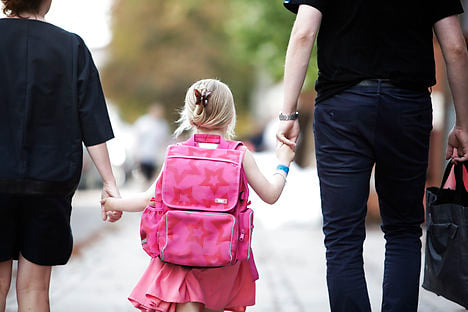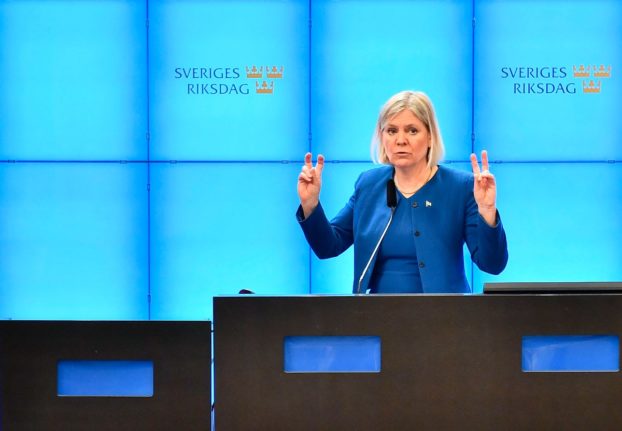EDUCATION
Denmark’s public schools enter a new era
Monday marked not only the end of summer holiday for the nation's public school students, but also the first day under a controversial school reform.
Published: 11 August 2014 10:47 CEST

Photo: Erik Refner/Scanpix
When parents nationwide shipped their children off to school on Monday morning, they had to deal with more than just the annual back-to-school blues. This year, the most comprehensive school reform in modern Danish history hung thick in the air as students unpacked their bags and found their new desks.
The most obvious difference schoolchildren will notice is a longer school day. Children in grades 0-3 (ages 6-9) will now have 30 hours of school each week, while students in grades 4-6 (ages 10-12) will have 33 hours per week and those in 7-9 grade (ages 13-15) will be in class for 35 hours per week.
The longer days will be most noticeable for the youngest children. First grade students previously had a minimum of 21.1 hours of teaching each week. That increases by nearly nine hours under the reform when the two hours of available tutoring are factored in.
Students will have more hours in Danish and maths and a daily average of 45 minutes of physical activity. The reform also includes a stronger focus on foreign languages, with students now learning English in first grade rather than third, and being introduced to a second foreign language beginning in fifth grade.
The school reform carries with it the bitter memories of a conflict over teachers’ working hours that resulted in a three-week teacher lockout in April 2013.
At the core of the disagreement was the Danish Union of Teachers’ (Danmarks Lærerforening) refusal to sign a collective bargaining agreement that gave school leaders, rather than the teachers themselves, more responsibility for deciding teachers’ work schedules.
With the union and Local Government Denmark (Kommunernes Landsforening – KL) unable to reach an agreement, the government stepped in to force teachers to accept the new conditions.
Roughly 875,000 students and course participants – including over 550,000 public school students – were affected by the lockout and many parents turned sour on the public school reform as the conflict raged.
But now that school has begun, the tone seems to have shifted. An opinion survey over the weekend revealed that a majority of parents support the ideas behind the reform.
The survey, carried out by KL, showed that 57 percent of respondents thought their children would learn more in school thanks to the reform. A majority also supported the additional hours in Danish and maths, as well as the introduction of physical activity and tutoring help.
“I’m very happy to see that parents support the reform in so many areas, because the support of parents is essential if the reform is to succeed,” Anna Mee Allerslev, the head of KL’s children and culture committee and Copenhagen’s deputy mayor for employment and integration, said in a press release.
“The overall goal of the reform is to raise the students’ level. So it is great that the parents believe in the vision. And I’d like to compliment parents on the openness and curiosity they have shown for the huge change that the reform presents,” she added.
Despite parents’ support of the individual elements of the school reform, KL’s survey still revealed a high level of uncertainty. Nearly a third of all respondents said that they felt ill informed about the changes their children will experience under the new reform.
It’s not just the parents who feel uncertain. A survey carried out by Danmarks Lærerforening over the summer showed that about half of all public school teachers’ union representatives didn’t know what to expect out of the new school year.
“We know that you don’t just get a reform to work from day one. But the teachers are really missing an overview over what tasks they are expected to do,” the union’s chairman, Anders Bondo Christensen, told Danmarks Radio in June.
Url copied to clipboard!


 Please whitelist us to continue reading.
Please whitelist us to continue reading.
Member comments